This is the 3rd piece about safe firearms handling habits, and about teaching kids good gun handling habits, and it will cover tips on shotgun handling habits.
Sponsored by Jagemann Sporting Group
Shotguns get a bad rap with women, because of the recoil. A common shotgun you will run across is a 12 gauge. And while they do recoil more than a 20 gauge, or a .410, they are perfectly fine to teach a person how to shoot a shotgun. If you have access to a 20 gauge or .410, that will be fun for someone who is not used to recoil, but a 12 gauge does have some advantages. The weight of a 12 gauge will absorb some of the recoil and actually, is often preferred over a 20 gauge. Think about it like this: as the shot goes off, without anyone or thing attached to the gun, the smaller gun will be moved more (be displaced more), just because it’s lighter. A 12 gauge is heavier and will be displaced less – in other words, more of the recoil is absorbed by the mass of the gun itself.
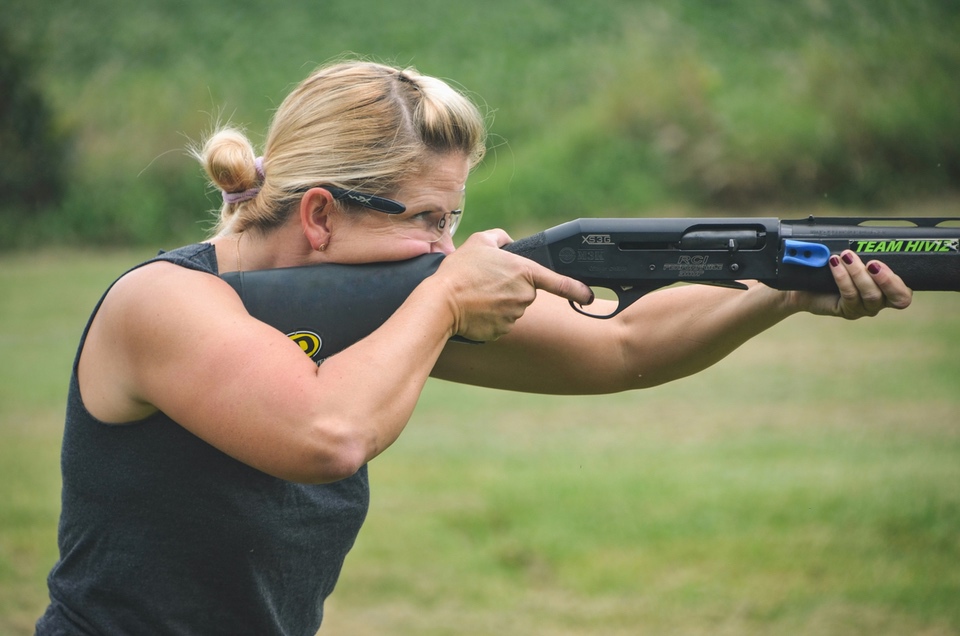
Starting small with a shotgun isn’t about the gauge of the barrel, especially when it comes to starting someone out with a shotgun. Start small in how many shotshells you load into the gun. Start small by not giving new shooters turkey loads or upland game loads. Find a light target load. Start small with your focus on form; build a good stance – weight forward, hinged forward slightly at hips, creating depth to your stance by dropping your strong-side foot back. Really get your face onto the stock. You need a cheek-weld that says, “My face is glued here!” While it might not look pretty, that one-with-the-gun weld will keep you from getting hit with the stock when the gun recoils.
Just like learning to handle a pistol or rifle safely, learning to handle a shotgun safely can be done by using the 4 rules of firearms safety.
1. Treat every gun as if it’s loaded. That means you first check if the gun is empty when you pick it up. To do this with a shotgun, make sure there is no shell in the chamber. Then, unload the magazine tube. If it is a break-barrel shotgun (over and under or side-by-side), you are going to need to “break” the gun open to see that it’s empty. A pump is going to be similar to a semi-auto, in that we need to make sure it’s empty, and then unload the magazine tube. For new shooters, this is often easiest to accomplish by just racking or cycling the shells through the gun. You should never do this inside your house. For many semi-auto guns, you can take your finger and depress the shell catch enough to let the shell slip past, and out of the tube. For some guns, this isn’t easy, and you should always make sure you unload your shotgun outside with the muzzle pointed in a safe direction.

Note: It is your personal responsibility to check if a gun is loaded every time you pick one up.
2. Never point the shotgun at anything you do not intend to destroy. This means that when you take guns out of the safe, bag them up, hand them to someone, anything you do with a gun, that you never point the gun in an unsafe direction. Whatever you do with a firearm, you always keep the muzzle from covering or pointing at anything you don’t want to destroy. Some people can become complacent about shotguns and safety, thinking that those tiny pellets in there can’t really hurt anyone too badly. This is wrong, and because shotguns can be loaded with buckshot or slugs, they should be respected the same as a rifle or pistol.
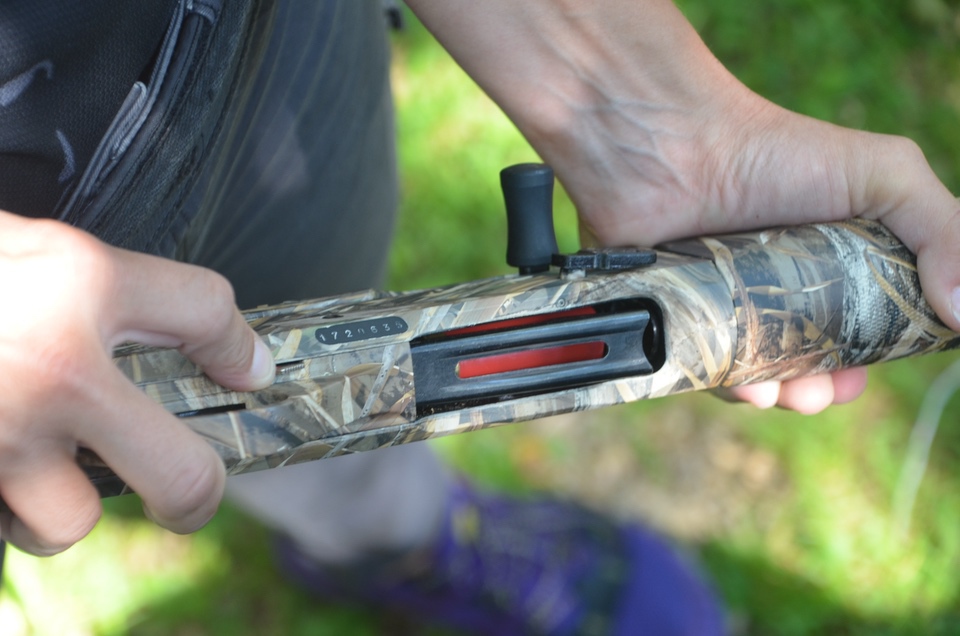
3. Finger off the trigger until you are ready to shoot. You don’t put a finger on a trigger until you are aimed at a target, and ready to fire a gun. With a shotgun, this might mean that you don’t put your finger on a trigger until you have mounted the gun and are starting to track a target. When you hunt, keeping your finger off the trigger means you never put your finger on the trigger until aimed at the target and ready to shoot.
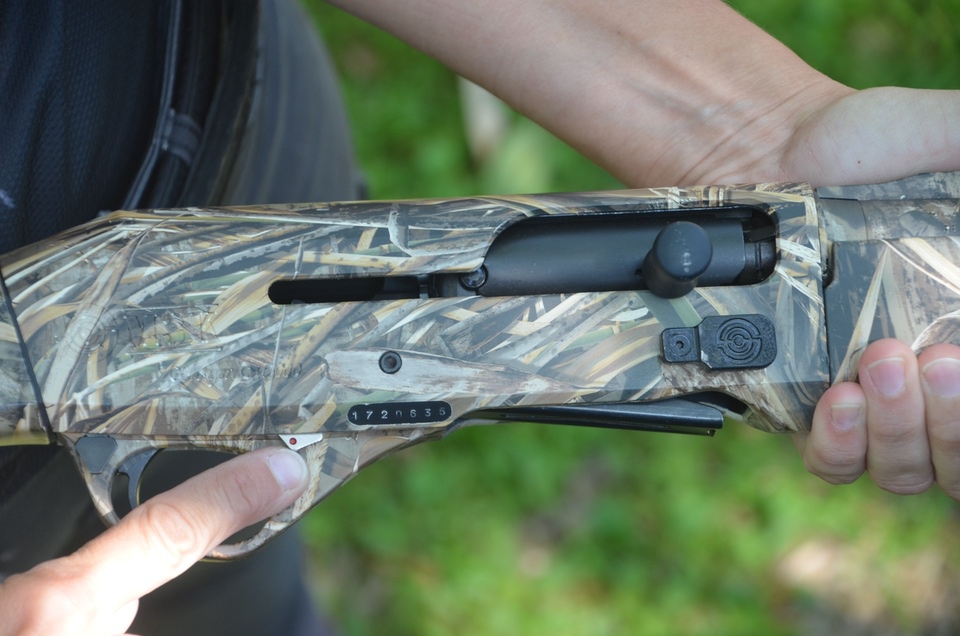
4. Know your target and beyond. This means considering what might be behind a target you are about to engage. While birdshot will not travel as far as buckshot or a slug, you need to consider what is beyond your target. You need to consider how far the propelled lead or steel will travel if you miss, and where will it go? Are there other hunters behind a deer you want to shoot with a slug gun? Is there a berm behind a zero target on the range?
Holding a shotgun requires 2 hands. Your stance should place the gun close to the center line of your body, well grounded, and into your shoulder. Your face should be firmly on the stock, and you need to establish a solid cheek weld. Your weight will be forward, over the balls of your feet and that will help you to manage the recoil. Your head should be level from side to side, to help maintain proper balance, and not tipped too far forward. Indexing, or establishing a position where your body is naturally facing the target, also aids in having a rough starting point to build your natural point of aim.
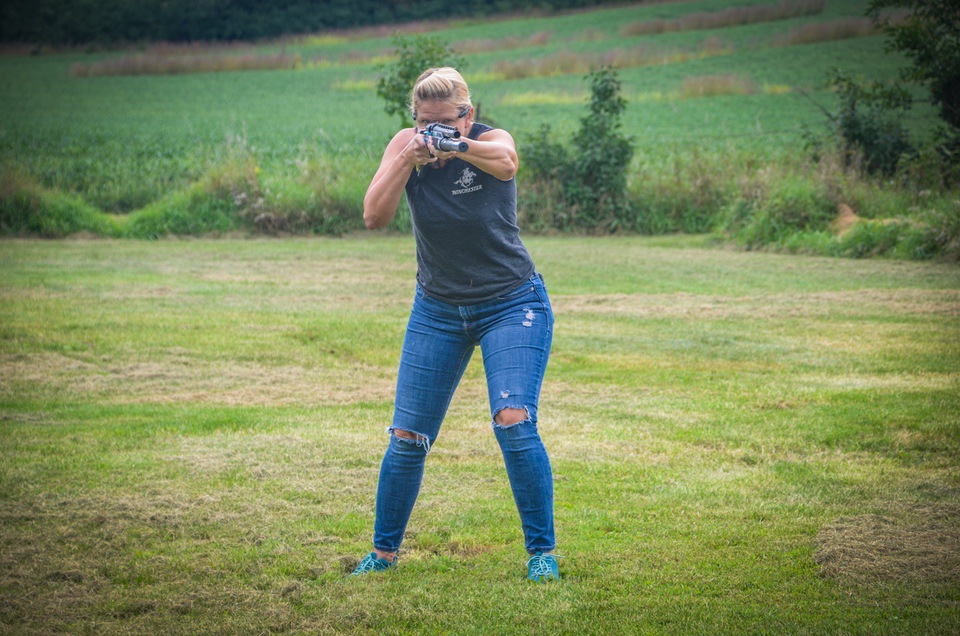
Shotguns require you to “track” or swing them through the air. There is as much art to this as science. The science part is that you need to keep the gun moving as you track the target, and keep it moving with the target while we pull the trigger and afterward. You don’t want to “ambush” a target with a shotgun. You need to establish the correct lead or hold on the target. The art comes into how we do that, how you need to see it and what your sight picture looks like that allows you to get our hits.
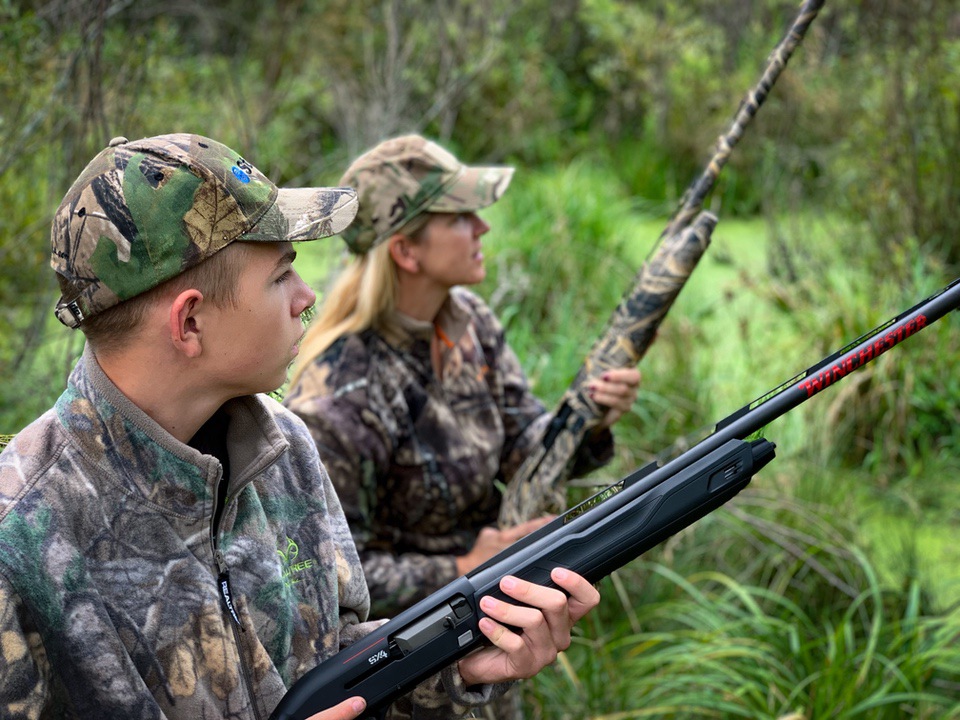
The act of swinging a shotgun can be very dangerous – especially while hunting. There might be other hunters in the blind to your sides and beside you in fields, and you need to be acutely aware of them, and where they are in relation to your barrel. While you swing at a passing bird, your focus is out far, not necessarily on your hunting buddies in your periphery. So understanding this point, dry-firing drills will help build awareness of your muzzle and what’s nearby.
Shotguns are one of the most common hunting guns you will see. Knowing how to safely handle them, unload, reload and move with them safely is an important part of not just gun ownership, but also, living in a world where you may encounter a tool such as a shotgun.
Becky Yackley primarily competes in 3 Gun, USPSA, Bianchi pistol, but has competed in shooting since 1989 in disciplines from service-rifle, to NCAA Air Rifle and Smallbore, air pistol and a little bit of long range rifle. She shoots guns and cameras at competitions around the country, and writes in her fictional spare time. View all posts by Becky Yackley